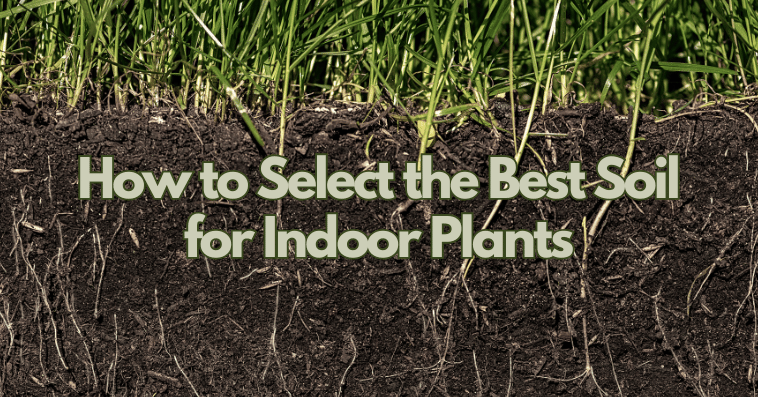Indoor plants have become an essential part of modern homes. Whether you're a seasoned plant parent or just starting your green journey, one of the most crucial factors that determines the health of your houseplants is the soil you choose. The right soil doesn’t just hold the plant upright; it provides essential nutrients, ensures proper water drainage, and supports root growth.
So, if you’ve ever wondered “What’s the best soil for indoor plants?”, you’re in the right place. This blog will guide you through everything you need to know about choosing the perfect potting mix for your leafy companions.
Why the Right Soil for Indoor Plants Matters
Indoor plants live in a controlled environment, and unlike outdoor plants, they depend entirely on the soil in their containers for nutrients, oxygen, water, and support.
Choosing the wrong soil can lead to:
Root rot
Fungal growth
Nutrient deficiencies
Stunted growth
Drooping or dying plants
By selecting the best indoor plant soil, you can ensure your green friends not only survive but thrive.
What Makes Good Indoor Plant Soil?
Before diving into soil types, let’s look at the essential features of a high-quality potting mix for indoor plants:
1. Proper Drainage
Good soil should retain some moisture but not stay soggy. Excess water should drain easily to prevent root rot.
2. Aeration
Roots need air. Soil with components like perlite, vermiculite, or coco coir allows airflow and prevents compaction.
3. Nutrient-Rich
A good soil mix should include organic matter such as compost, worm castings, or peat moss to nourish your plants.
4. pH Balance
Most indoor plants thrive in slightly acidic to neutral soil (pH 6.0–7.0). The right soil maintains this balance.
Types of Indoor Plants and Their Soil Needs
Different plants have different preferences when it comes to soil. Here’s a breakdown of common indoor plant categories and their ideal soil types.
1. Foliage Plants (e.g., Snake Plant, Pothos, Peace Lily)
These plants do well in a general-purpose potting mix with good drainage.
Recommended soil components:
Coco peat or peat moss
Perlite or vermiculite
Compost or organic fertilizer
2. Succulents and Cacti
These drought-tolerant plants need well-draining soil to prevent root rot.
Recommended soil components:
Coarse sand
Perlite
Crushed gravel or pumice
Little organic matter
3. Flowering Plants (e.g., African Violets, Geraniums)
They require nutrient-rich soil that retains moisture while allowing excess to drain out.
Recommended soil components:
Compost or worm castings
Coco peat
Perlite
A bit of garden soil
4. Orchids
Orchids need very loose, chunky soil that mimics tree bark environments.
Recommended soil components:
Pine bark
Charcoal
Sphagnum moss
Coconut husk
5. Herbs (e.g., Basil, Mint, Parsley)
Herbs need light, well-draining, and fertile soil that can support quick growth.
Recommended soil components:
Organic compost
Vermicompost
Coco peat
Sand
DIY Potting Mix for Indoor Plants
If you're someone who loves to take control of your plant care, you can create your own potting mix at home using common ingredients.
Basic DIY Mix for Indoor Foliage Plants:
1 part coco peat or peat moss
1 part perlite or vermiculite
1 part organic compost
DIY Mix for Succulents:
2 parts coarse sand
1 part perlite
1 part potting soil or coco peat
Creating your own mix allows you to customize the texture, pH, and nutrient content as per plant needs.
Ready-to-Use Potting Mixes: What to Look For
If you prefer ready-made potting soil, make sure to read the label. Here’s what to look for when buying:
✅ Soil type mentioned clearly (universal, cactus, orchid, etc.)
✅ pH range within 6.0–7.0 for most indoor plants
✅ Free from pests and pathogens
✅ Enriched with compost or slow-release fertilizers
✅ Lightweight and fluffy texture
Pro Tip: Avoid garden soil for indoor plants as it can compact over time, lacks proper drainage, and may contain pests.
Common Soil Problems and Fixes
Even with the right soil, problems can occur. Here's how to spot and fix them:
1. Problem: Water pooling on top
Fix: Mix in more perlite or sand to improve drainage.
2. Problem: Foul smell from the pot
Fix: Likely root rot. Repot with fresh soil and trim dead roots.
3. Problem: White mold or fungus on the surface
Fix: Improve air circulation and reduce overwatering. Sprinkle cinnamon as a natural antifungal.
4. Problem: Tiny bugs in soil
Fix: Dry out soil between waterings and use neem oil or a natural insecticide.
Pro Tips for Indoor Soil Success
🌿 Always use containers with drainage holes.
🌿 Repot your plant every 12–18 months to refresh soil.
🌿 Add a layer of pebbles or clay balls at the bottom of pots for extra drainage.
🌿 Top-dress soil with compost every 2–3 months to enrich nutrients.
🌿 Use soil moisture meters to avoid overwatering.
Where to Buy the Best Indoor Plant Soil?
Looking for premium-quality, pest-free, and ready-to-use potting mix for your indoor plants? PaudheWale has you covered!
🌱 Choose from a wide range of:
Cactus and succulent soil
Herbal potting mix
Orchid mix
General-purpose indoor plant soil
DIY soil kits
Designed for healthy root growth, moisture retention, and pest resistance, PaudheWale’s soils are tested, trusted, and delivered to your doorstep.
👉 Shop your perfect potting mix now at PaudheWale and give your indoor plants the best start in life.
